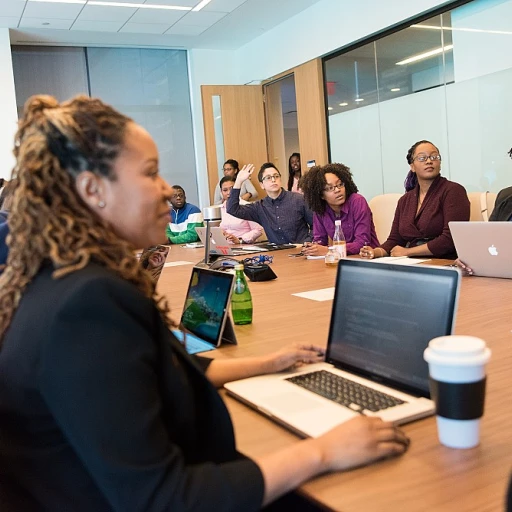
Understanding Succession Planning in Nonprofits
Importance of Planning for Leadership Continuity
Succession planning is a vital aspect for nonprofits aiming to maintain stability and ensure smooth transitions in leadership roles. The unique nature of nonprofits, particularly those in Minnesota, demands a strategic approach to replacing departing leaders, like an executive director, with individuals who share the organization's mission and values.
For many nonprofit organizations, the public policy landscape can shift rapidly, requiring adept leadership that can adapt and steer the organization towards its goals. This is why understanding the dynamics of succession planning is crucial, especially for public-centered organizations in Minneapolis and St. Paul, Minnesota.
Effective succession planning in the nonprofit sector involves more than just filling the job vacancy; it's about preserving the organization's mission-driven essence and maintaining momentum in public-impact work. The employment strategies must be crafted to find individuals who not only fit the role but also align with the nonprofit's strategic objectives.
To delve further into crafting effective succession plans for these essential positions, consider resources on crafting effective succession plans, which provide insights into aligning job replacements with your organization’s core values and strategic goals.
Challenges in Nonprofit Succession Planning
Identifying the Obstacles in Leadership Transitions
In the nonprofit sector, succession planning is critically important yet presents distinct challenges. Nonprofit organizations often face significant hurdles when successfully navigating these transitions, especially given the mission-driven nature of their work. One prominent issue is the limited resources that many nonprofits operate under, making it difficult to allocate time and effort toward planning for leadership changes. Nonprofits may also confront difficulties due to the unique set of skills required for an executive director or similar leadership roles. Retaining talent in these positions, particularly in smaller organizations, can be tough. Considering the persistent demand for experienced leaders in Minneapolis and throughout Minnesota, competition is fierce, and nonprofits need to be strategic about how they approach succession. The board of a nonprofit often plays a crucial role in succession planning. However, many board members are volunteers, which might limit their ability to commit the necessary time to this complex task. Additionally, planning for the unexpected, such as a sudden departure, is challenging when the organization lacks a clear strategy or public policy guidance. This is why nonprofits may look to external resources, like the Minnesota Council of Nonprofits (mcn), which offers job boards and other tools to support effective succession strategies. Moreover, a successful succession plan needs to address the nonprofit’s mission and ensure that any transitions align closely with its public goals. Ensuring seamless leadership transitions is crucial to maintaining organizational stability and public trust. For more insights on how to navigate these challenges, consider reading about chief executive succession planning.Role of the Minnesota Council of Nonprofits Job Board
The Minnesota Council of Nonprofits' Role in Bridging the Gap
The Minnesota Council of Nonprofits (MCN) plays a pivotal role in the nonprofit sector by offering a robust platform for organizations and job seekers alike. While succession planning in nonprofits often encounters challenges, the council's job board serves as a valuable resource for organizations striving to fill key roles such as an executive director or other critical positions. By utilizing the MCN job board, nonprofits can efficiently post job openings tailored to mission-driven goals, reaching a broad audience of passionate individuals interested in nonprofit jobs. This is particularly important in Minneapolis, Minnesota, where the demand for dedicated talent is high.- Resource Hub: The job board acts as a central hub for nonprofit organizations, saving time by connecting them with potential employees who share their values and mission.
- Policy Support: The MCN offers insightful public policy resources, assisting organizations in maintaining compliance and aligning their strategic goals with legal requirements.
- Strategic Job Posting: Through strategic job posting on the board, nonprofits can effectively communicate their needs and attract candidates who are likely to excel in a mission-driven environment.
- Comprehensive Reach: The board's reach extends across Minnesota, tapping into a pool of talent from Minneapolis to St. Paul and beyond.
Strategies for Effective Succession Planning
Building a Strong Framework for Leadership Transition
Effective succession planning in nonprofits requires a strategic approach tailored to the unique dynamics of the sector. By focusing on the key elements of preparing for a leadership transition, organizations can ensure continuity and uphold their mission-driven objectives.
Establish Clear Policies and Procedures
Nonprofit organizations should first focus on developing comprehensive policies that outline the succession plan. This includes defining the roles and responsibilities of current and future leaders, with special attention to executive directors. It is critical to engage board members in these discussions to ensure alignment with the organization’s goals and public policy considerations.
Engage and Develop Employees
Effective succession planning entails recognizing and nurturing the potential within current employees. Nonprofits in Minneapolis and across Minnesota can benefit from allocating resources for training and professional development. This not only prepares staff for future positions but also enhances organizational resilience.
Utilize Job Boards for Recruitment
Leveraging platforms like the Minnesota Council of Nonprofits Job Board can be pivotal. These boards serve as a valuable resource to connect with potential candidates, whether seeking full-time leaders or part-time support, thereby broadening the pool of talent available to mission-driven organizations.
Conduct Regular Evaluations
Continuous assessment of the succession plan is vital. Regular reviews help to align the strategic plan with evolving organizational needs. This includes evaluating the readiness of internal candidates for key roles and determining if external recruitment is necessary.
By thoughtfully implementing these strategies, nonprofits can more effectively navigate the complexities of leadership succession and ensure a stable transition, securing the organization's future.












